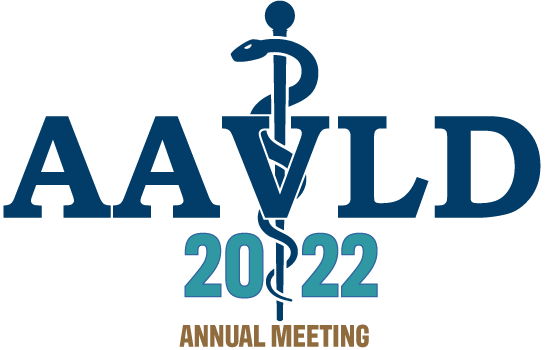JVDI in Focus- April 2023
JVDI in Focus
Our April focus is an open-access article appearing in the upcoming May issue: “Lesions and viral loads in racing pigeons naturally coinfected with pigeon circovirus and columbid alphaherpesvirus 1 in Australia” by Babu K. Nath, Shubhagata Das, Naomie Tidd, Tridip Das, Jade K. Forwood, Shane R. Raid.
J Vet Diagn Invest 2023;35(3). https://journals.sagepub.com/doi/full/10.1177/10406387231156839
Read More
Functions of Committees
Committees serve multiple functions that are essential to the AAVLD mission. This includes dissemination of the latest scientific information that will advance the many disciplines engaged with diagnostic medicine, including:
- technological or methodological advances in the disciplines
- new or changing disease syndromes and how they are detected.
- sharing of one’s expertise and experience with colleagues, students, and trainees
- sharing one’s expertise when called upon to aid stakeholders, and policy and decision makers.
- recognizing excellence in others to encourage ongoing excellence in our disciplines.
- supporting the annual meeting, the organization’s Journal (JVDI), Newsletter and list-serve to ensure good communication, collaboration, training, and cooperation.
- provide leadership to ensure a successful scientific session of their discipline at the annual meeting.
Committees may identify, address, and resolve specific issues related to diagnostic laboratory medicine. Committees may, as a function of their investigation of the diagnostic challenges associated with a particular disease, present scientific and educational data for further discussion within their committee meetings with the expected outcome of reaching a greater level of confidence and understanding of the diagnostic criteria and methodologies that are most appropriate to determine the presence or absence of the disease in question. These outcomes are communicated to the Association membership via their annual committee report.
Read More
Lab News by DHZ
Dr. Brodersen Retires from the University of Nebraska
Read More
MSU VDL welcomes inaugural Diagnostic and Client Services Veterinarian (DCSV)
MSU VDL welcomes inaugural Diagnostic and Client Services Veterinarian (DCSV)
On January 17, 2023, Dr. Rachel Whitesell, DVM joined the Michigan State University Veterinary Diagnostic Laboratory as the Lab’s inaugural diagnostic and client services veterinarian.
Read More
Varioius diseases affect domestic and wild lagomorphs and challenge veterinary laboratory diagnosticians regularly. Domestic rabbits (Oryctolagus cuniculus) are bred for different purposes including meat or fur production, laboratory research investigation, or simply as companion animals. Neoplasms, infectious diseases, and several background lesions are important conditions in this group. Wild lagomorphs, including rabbits of different genera (Oryctolagus, Sylvilagus, Brachylagus), hares/jackrabbits (Lepus spp.), and pikas (Ochotona spp.), are very common in different parts of the world and are affected regularly by outbreaks of emerging and re-emerging infectious diseases or exposed to environmental toxins.
We are inviting submissions to a JVDI special section on Lagomorph disease investigations to be guest edited by Drs. Javier Asin, CAHFS, UC Davis; Denise Imai-Leonard, Comparative Pathology Laboratory, UCDavis; and Fábio Abade dos Santos, National Institute for Agricultural and Veterinary Research (INIAV), Oeiras, Portugal.
Read More
JVDI in Focus
Our February focus is an article appearing in JVDI’s March issue, “Immunohistochemical analysis of expression of VEGFR2, KIT, PDGFR-β, and CDK4 in canine urothelial carcinoma” by Laura C. Setyo, Shannon L. Donahoe, Patrick L. Shearer, Penghao Wang, Mark B. Krockenberger.
Read More
$1.26M Earmarked in Federal Budget for UNH’s NH Veterinary Diagnostic Lab
Read More
AVMA State diagnostic laboratories protect all creatures, great and small
The caseload at the Oklahoma Animal Disease Diagnostic Laboratory has more than doubled since the 1990s, but the personnel has dropped by about half with the use of new technologies.
Yet, staffing continues to be a big challenge at the OADDL to meet the ever-increasing number of cases—with the main caseload coming from swine, cattle, chickens, and horses, in that order.
Read More
Read More
Read More
Change of the Methods used for Endocrine Essays
Read More
President Shuping Zhang is pleased to announce that at the June AAVLD Executive Board meeting, the Directors approved the transition of the Diversity Equity and Inclusion Task Force to an AAVLD Special Committee of the same name. The DEI Task Force was appointed by then President Deep Tewari in 2020. The task force successfully launched efforts to ensure AAVLD fosters a diverse and inclusive environment. Led by Cochairs Cat Barr and Amar Patil, the Task Force crafted an AAVLD DEI policy (see below), following a survey and input from the general membership. Members may have noticed announcements drawing their attention to thought-provoking programs including PBS NOVA’s ‘Picture a Scientist’ and the Davis & Thompson Foundation’s Voices in Pathology series discussion, ‘Asian Voices’. In addition, the business pages of the JVDI will soon contain statements regarding DEI related policies. Ongoing efforts continue and the transition from Task Force to Special Committee ensures these efforts will continue from year to year.





